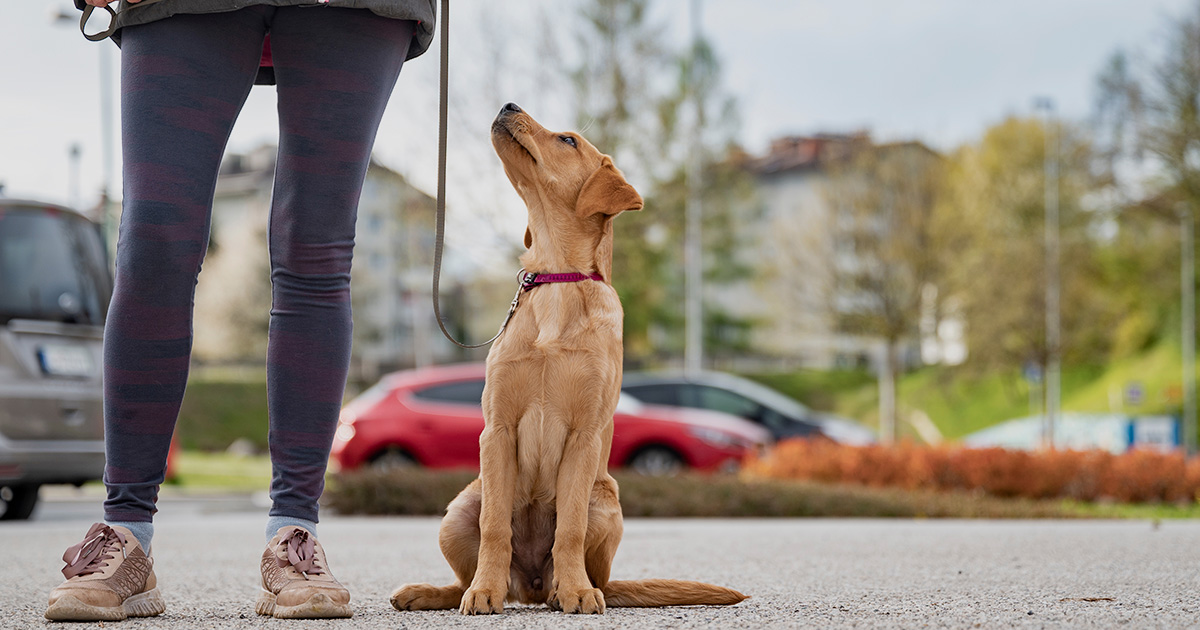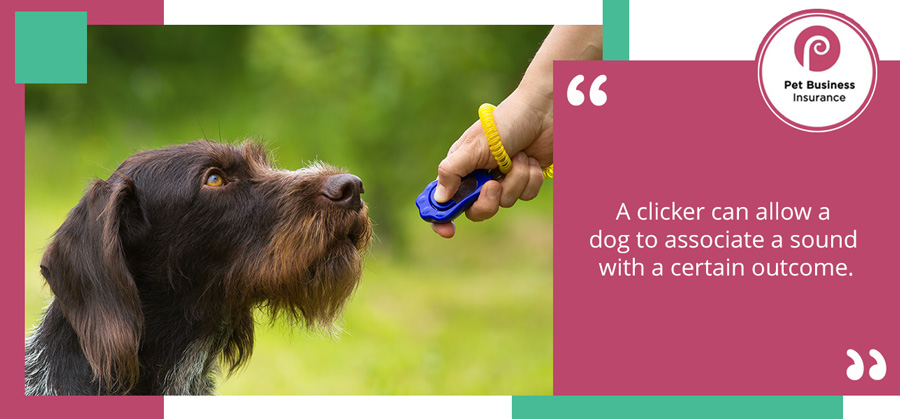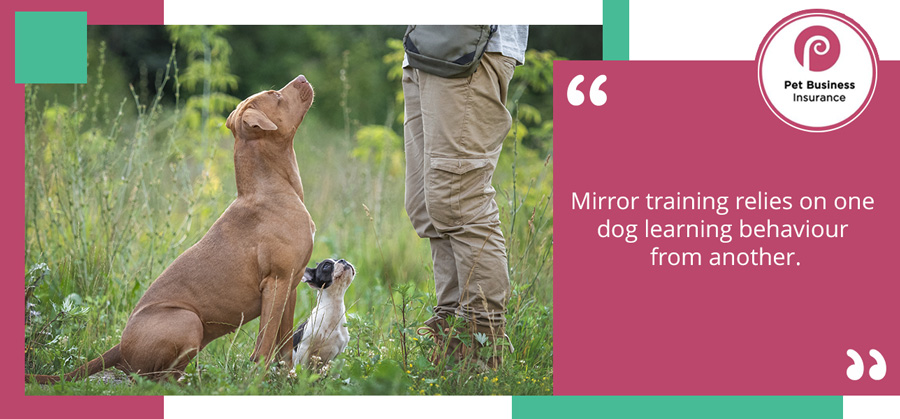
A poorly trained dog (or one lacking training) can cause a range of issues: from jumping up at people or stealing food to not returning when called.
Dog training or obedience classes may exist in your area, but it’s worth first considering the different types of dog training available to determine what kind will be right for your dog, or a dog in your care.
Positive reinforcement
This involves rewarding a dog whenever they display a particular wanted behaviour, e.g. asking the dog to sit and then giving them a dog treat when they do.
The reward doesn’t have to be a treat; it could be a toy or the fact that you just make plenty of fuss when they do the thing you have asked of them.
Poor behaviour doesn’t result in punishment, the unwanted act is simply ignored.

Clicker training and conditioning
Clicker training is a form of conditioning which involves use of positive reinforcement. The clicker provides an audible cue: when the dog does something positive, the noise helps the dog to recognise a good behaviour that they will come to associate with receiving a reward.
Other examples of conditioning training include rattling a dog treat box to encourage a dog to return from outside, or whistling a certain way for a dog to lie down or sit.
Whatever approach is used, the cue must be given often and consistently so that the dog always associates it with a particular outcome.
Negative reinforcement
This is an approach sometimes used to deal with poor behaviour. It usually involves removing something the dog may want, such as a treat, toy, or even yourself, when the dog does something unwanted.
Alpha dog training
This type of training recreates a pack mentality situation. It relies on the assumption that the dog sees you / the trainer as the head of their ‘pack’ hierarchy and the figure to whom they should exhibit submissive behaviour.
Examples in this mode include eating first, before the dog is allowed to, and being the first to walk through doors.
This form of training is not as popular as it once was. It can be difficult to achieve good results and may be potentially problematic for other members of a dog’s household who are not perceived by the dog to be ‘dominant’.

Mirror training
Mirror training is a “learn by example” approach, whereby the dog learns behaviour either from another dog or the person training them. For example, if you have an older dog which sits on command, the younger dog may learn this behaviour from them.
A human role model could also perform a task, such as fetching an object, which results in them being ‘praised’ by the trainer upon successful completion. However, this method won’t always be as easy without a canine role model.
Science-based dog training
This is like positive reinforcement training but is based on cognitive and psychological research carried out by vets and animal behaviourists. The intention is to teach dogs by communicating in a way they will understand.
With the science-based approach, dogs are rewarded for positive behaviour, but bad or undesired behaviour is not ignored. Instead, rewards are taken away. The method often includes use of other techniques, like mirror training.
Specialised or occupational training
There are also more specialised types of dog training that will be appropriate for certain circumstances, such as agility training, training for service dogs (e.g. guide dogs and hearing dogs) or police dogs.
For some of these canine careers, certain qualities will need to be present in the dog before training can commence. For example, a police dog will need to be confident and brave, while a guide dog may need to be sensitive and patient.
Training of this type will probably be more intensive and last longer than other typical forms of dog training, so that the dog can meet a required standard.

Choosing a dog trainer
Reputation is always a good indicator of any professional: research them carefully to see what qualifications and experience they have. Reviews and testimonials should be available for anyone established. In addition, ensure they have appropriate insurance.
The sign of a trustworthy dog trainer
If you offer professional dog training services, or you’re interested in becoming a trainer, you’ll want to reassure potential clients of your expertise and reliability – after all, your clients’ precious pets will be in your care.
Having comprehensive dog training insurance can help foster trust and confidence in your business, as it speaks to your commitment towards professionalism and responsibility.
Pet Business Insurance is a leader in the provision of insurance to a range of small- and medium-sized pet businesses, including professional dog trainers and dog behaviourists.
As standard, our insurance covers third-party claims for damage or injury caused by your work, as well as claims from clients for accidents or injuries that befall their pet while in your care.
We also provide a range of other inclusive cover, such as assistance if an animal is lost or stolen, and optional protections against other risks, such as the financial fallout from offering negligent advice.
To learn more about our dog training insurance, get in touch with us today. Call 01284 736 874, or complete our enquiry form.